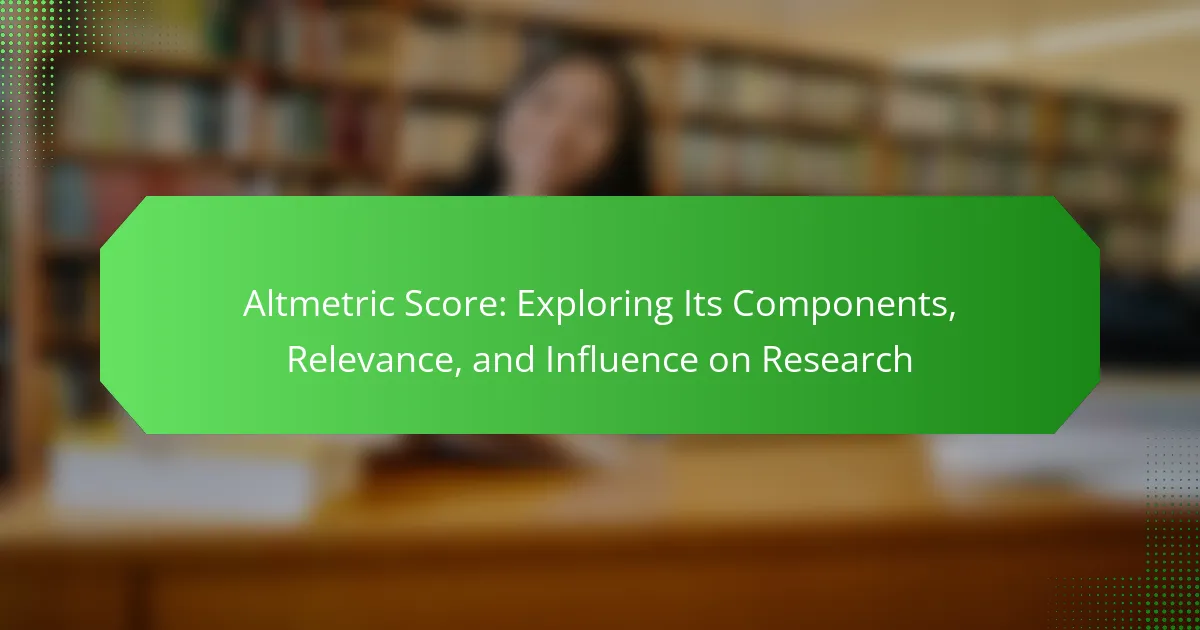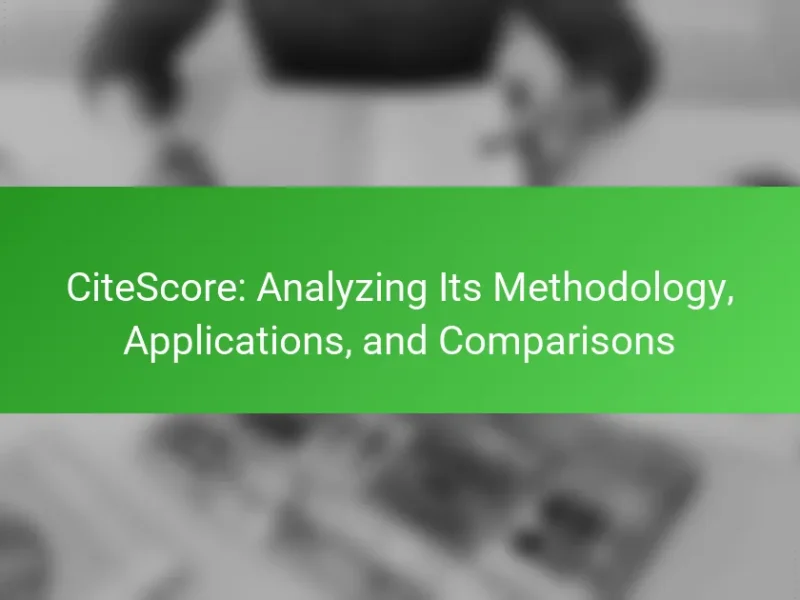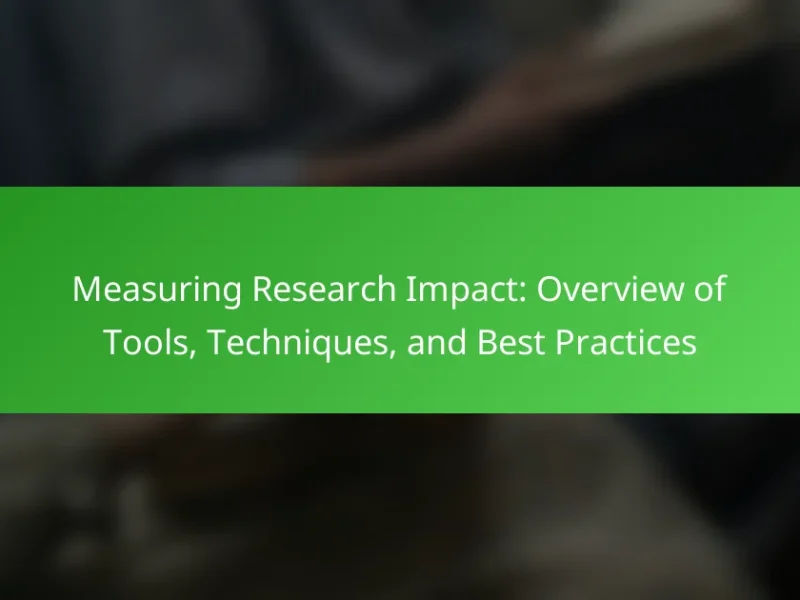The Altmetric Score is a metric that quantifies the online attention and engagement received by research outputs, aggregating data from sources such as social media, news outlets, and policy documents. This score reflects the frequency of mentions, shares, and discussions surrounding an article, indicating its visibility and interest within the academic community and beyond. While higher Altmetric Scores often correlate with increased citation rates and academic performance, the metric has limitations, including a focus on online attention rather than research quality and potential biases across disciplines. Additionally, the score does not provide context for mentions, which may misrepresent the impact of the research. This article explores the components, relevance, and influence of the Altmetric Score in evaluating research significance.
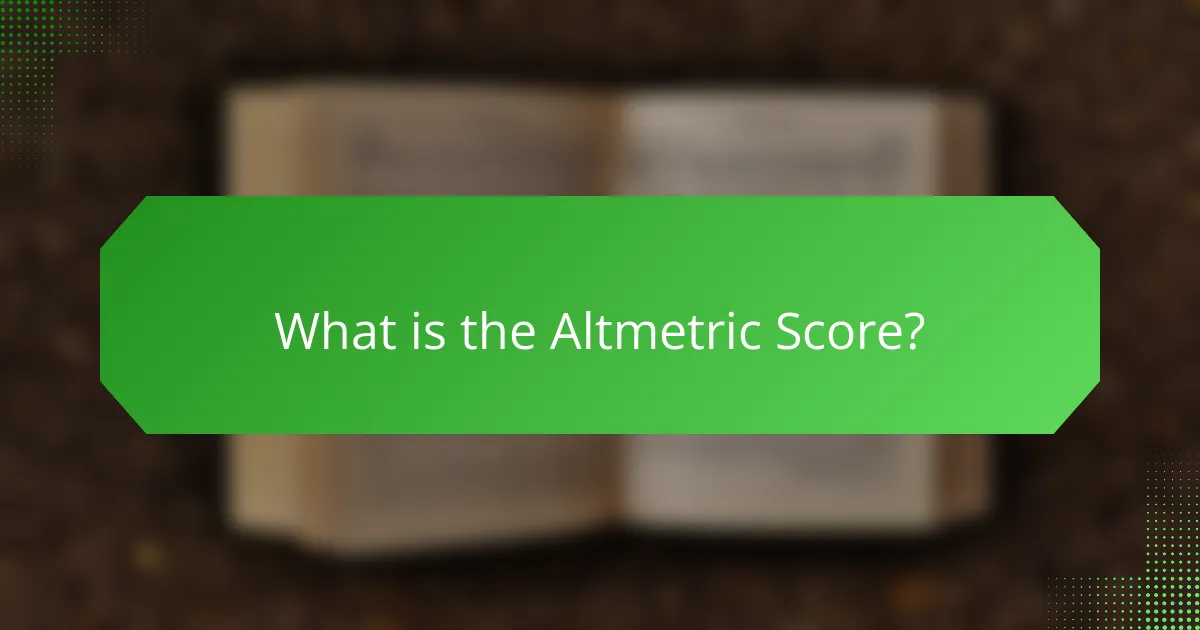
What is the Altmetric Score?
The Altmetric Score is a metric that measures the online attention and engagement a research output receives. It aggregates data from various sources, including social media, news outlets, and policy documents. The score reflects how often an article is mentioned, shared, or discussed online. Higher scores indicate greater visibility and interest in the research. Altmetric Scores help researchers and institutions assess the impact of their work beyond traditional citation metrics. This score is updated in real-time, providing an ongoing view of an article’s reach. It is increasingly used to complement conventional metrics in evaluating research significance.
How is the Altmetric Score calculated?
The Altmetric Score is calculated based on the volume and type of online attention a research output receives. It aggregates data from various sources including social media, news outlets, and policy documents. Each source contributes differently to the score. For example, mentions in mainstream media carry more weight than tweets. The score also considers the recency of the mentions. More recent mentions have a higher impact on the score than older ones. The Altmetric Score is designed to reflect the broader impact of research beyond traditional citations. This approach allows for a more comprehensive understanding of research influence in real-time.
What data sources contribute to the Altmetric Score?
The Altmetric Score is influenced by various data sources. These sources include social media platforms, news outlets, blogs, and policy documents. Academic citations and patent databases also contribute to the score. Additionally, online reference managers like Mendeley are included. Each source provides unique insights into the impact and reach of scholarly articles. The aggregation of these data points forms a comprehensive view of an article’s engagement. This multifaceted approach ensures a robust assessment of research influence.
What metrics are included in the Altmetric Score calculation?
The Altmetric Score calculation includes several key metrics. These metrics encompass mentions in news articles, blogs, and social media platforms. It also considers citations in policy documents and online reference managers. Additionally, the score accounts for downloads and views from academic platforms. Each metric contributes to the overall visibility and impact of a research output. This comprehensive approach reflects the diverse ways research is engaged with beyond traditional citations.
Why is the Altmetric Score important for researchers?
The Altmetric Score is important for researchers because it measures the online attention and engagement their work receives. This score reflects the impact of research beyond traditional citations. It includes mentions in social media, news articles, and policy documents. A higher Altmetric Score indicates greater visibility and relevance in public discourse. Researchers can use this score to gauge the societal impact of their work. It helps them understand how their findings are being discussed and disseminated. Additionally, funders and institutions often consider Altmetric Scores in evaluating research impact. This score can enhance a researcher’s reputation and aid in career advancement.
How does the Altmetric Score reflect research impact?
The Altmetric Score reflects research impact by quantifying online attention and engagement. It aggregates data from various sources, including social media, news outlets, and academic blogs. This score indicates how widely a research output is discussed and shared. A higher score suggests greater visibility and influence within the academic community and beyond. For example, a study published in PLOS ONE found that articles with higher Altmetric Scores had more citations. This correlation demonstrates that increased online attention can lead to greater academic impact.
What advantages does the Altmetric Score provide over traditional metrics?
The Altmetric Score provides real-time insights into the online attention a research output receives. Unlike traditional metrics, it captures a broader range of engagement, including social media mentions, news articles, and policy documents. This allows researchers to gauge the immediate impact of their work beyond citations. Traditional metrics often focus solely on journal impact factors and citation counts, which can be slow to reflect current relevance. The Altmetric Score integrates diverse data sources, providing a more comprehensive view of a research output’s influence. It highlights public and media engagement, showcasing the societal impact of research. This metric can reveal trends in public interest that traditional metrics may overlook. Overall, the Altmetric Score offers a more dynamic and holistic assessment of research impact.
What are the components of the Altmetric Score?
The components of the Altmetric Score include mentions from various sources such as news outlets, social media, and policy documents. Each mention contributes to the overall score based on its source type and reach. For example, a tweet may have a lower weight than a mention in a major news article. The score aggregates data from over 20 different sources, including blogs, Wikipedia, and research highlights. Additionally, the score reflects the attention a research article receives over time. This dynamic nature allows for real-time tracking of research impact. Altmetric uses a proprietary algorithm to calculate the score, considering factors like the volume and velocity of mentions.
What role do social media mentions play in the Altmetric Score?
Social media mentions significantly contribute to the Altmetric Score. They reflect the level of public engagement with research outputs. Each mention on platforms like Twitter, Facebook, or LinkedIn is tracked and quantified. This data is aggregated to provide a score that indicates the research’s visibility and impact. High social media activity can lead to a higher Altmetric Score. It demonstrates how widely the research is discussed outside traditional academic circles. Studies show that social media mentions correlate with increased citations in academic literature. Thus, social media mentions are a key component of the Altmetric Score, emphasizing the importance of online engagement in academic research.
How do news articles influence the Altmetric Score?
News articles significantly influence the Altmetric Score by increasing the visibility and reach of research outputs. When a news article references a specific study, it can lead to higher public engagement. This engagement is often measured through social media shares, comments, and discussions. Increased online activity around the research can elevate its Altmetric Score. The score reflects the attention and impact of the research in real-time. Research shows that mentions in reputable news outlets correlate with higher Altmetric Scores. This correlation indicates that media coverage can enhance the perceived importance of academic work. Therefore, news articles serve as a catalyst for broader dissemination and recognition of research findings.
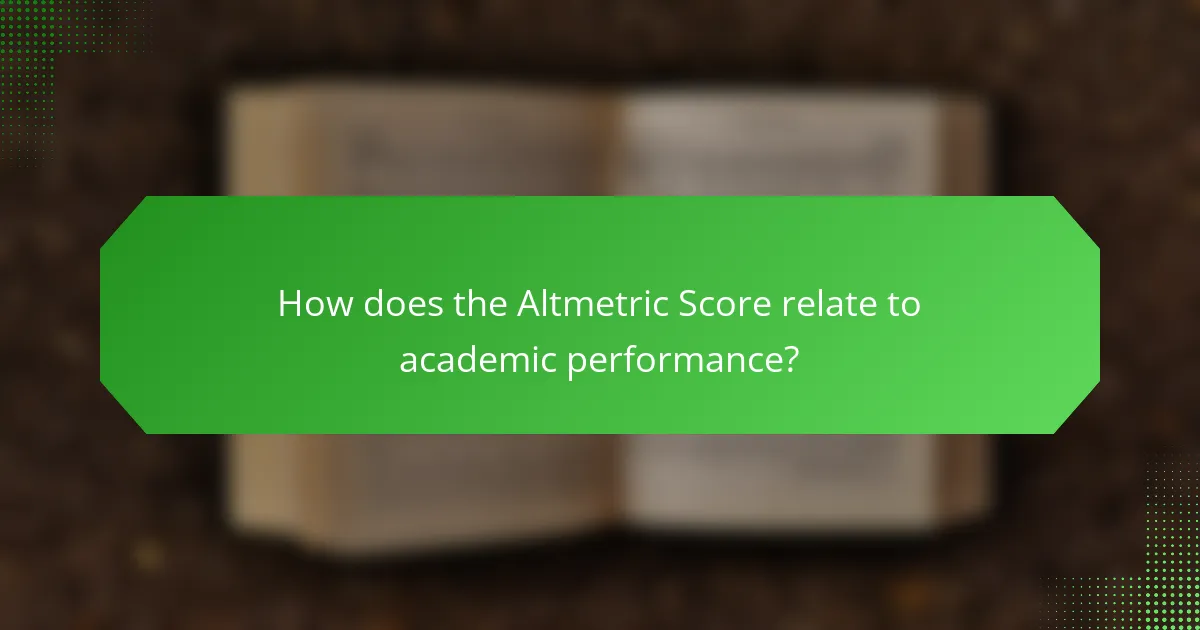
How does the Altmetric Score relate to academic performance?
The Altmetric Score is a measure of the attention a research output receives online. It reflects the engagement and visibility of academic work across various platforms. Higher Altmetric Scores often correlate with greater academic performance. This correlation is evident in studies showing that papers with higher scores tend to be more frequently cited. The score aggregates data from social media, news outlets, and policy documents. This data indicates how well research resonates with the public and other researchers. Therefore, a strong Altmetric Score can enhance an academic’s reputation and influence.
What correlation exists between the Altmetric Score and citation counts?
The Altmetric Score and citation counts have a positive correlation. Research shows that higher Altmetric Scores often correspond to higher citation counts. For instance, a study published in the “Journal of Informetrics” by Haustein et al. (2016) indicates that articles with significant online attention tend to receive more citations. Specifically, the study found that articles with high Altmetric Scores were cited more frequently within a certain timeframe. This trend suggests that social media and online discussions can enhance the visibility and impact of research, leading to increased citations.
How can the Altmetric Score be used in research evaluations?
The Altmetric Score can be used in research evaluations to measure the online attention and engagement a research output receives. It aggregates data from various sources, including social media, news outlets, and academic platforms. This score provides insights into the broader impact of research beyond traditional citations. Researchers can use it to identify the reach and relevance of their work. Institutions may also evaluate research performance based on Altmetric Scores to assess the influence of their outputs. Studies show that higher Altmetric Scores correlate with increased public interest and engagement with research findings.
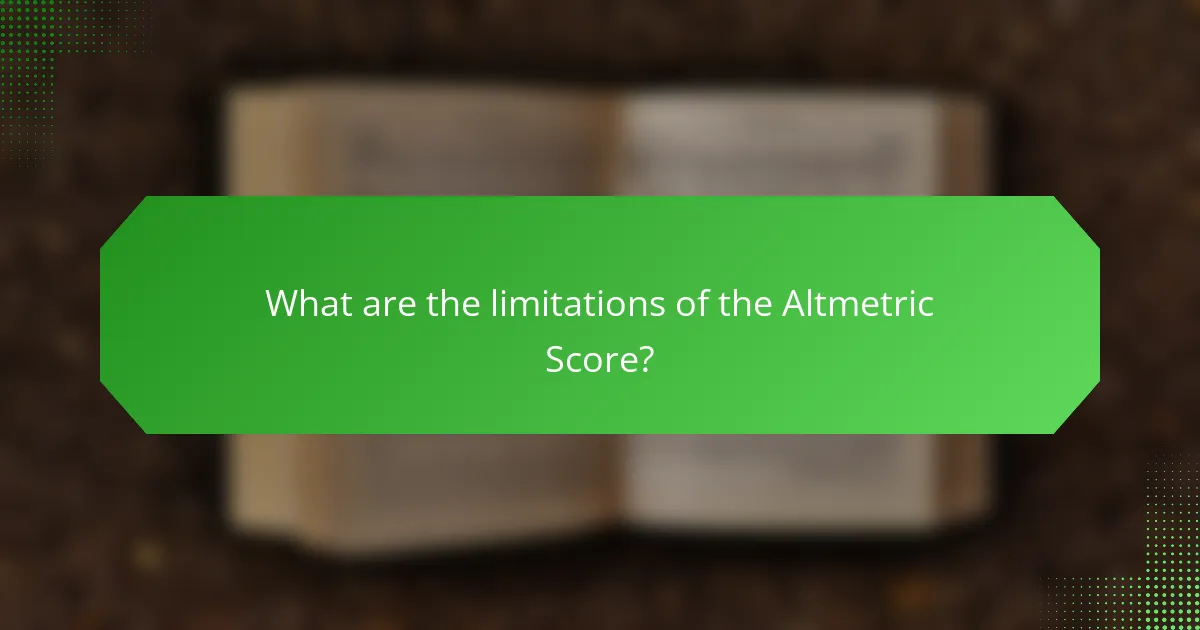
What are the limitations of the Altmetric Score?
The Altmetric Score has several limitations. It primarily measures online attention rather than research quality. This means it does not account for the rigor of the research methodology. The score can be influenced by social media trends, which may not reflect academic significance. Additionally, it may favor certain disciplines over others, leading to bias. The Altmetric Score does not differentiate between positive and negative mentions. This lack of context can misrepresent the impact of the research. Furthermore, it relies on data from specific sources, which may not capture all relevant discussions. Overall, these limitations can affect the reliability of the Altmetric Score as a measure of research impact.
What factors can skew the Altmetric Score?
Several factors can skew the Altmetric Score. These include the volume of mentions across various platforms. A high number of mentions can inflate the score. Additionally, the influence of the sources where mentions occur matters. Mentions from high-impact journals or well-known media outlets carry more weight. The timing of mentions also affects the score. Early mentions can lead to higher initial scores. Furthermore, automated mentions from bots can artificially increase the score. Lastly, the context of the mentions is crucial. Positive or negative sentiment can influence the perceived impact of the research.
How can the Altmetric Score be misinterpreted?
The Altmetric Score can be misinterpreted by equating it directly with research quality. Many users mistakenly assume a high score indicates high-quality research. The score primarily reflects social media attention and engagement, not the rigor of the research itself. Additionally, scores can vary greatly among disciplines. This variance can lead to skewed perceptions of impact across fields. Some articles may receive high scores due to media hype rather than scientific merit. Furthermore, the score does not account for negative attention or criticism. Misunderstanding these aspects can result in overvaluing certain studies. Accurate interpretation requires contextual understanding of the score’s components and limitations.
What are the criticisms of relying solely on the Altmetric Score?
Relying solely on the Altmetric Score is criticized for its lack of depth. The score primarily reflects online attention, not academic impact. It can be influenced by social media trends, which may not indicate quality. The Altmetric Score also does not account for citation metrics, which are essential for evaluating research significance. Additionally, it may favor popular topics over niche research areas. Some argue that it can misrepresent the value of scholarly work. This reliance could lead to skewed perceptions of research quality and relevance. These criticisms highlight the need for a multifaceted approach to assessing research.
How can researchers effectively utilize the Altmetric Score?
Researchers can effectively utilize the Altmetric Score to gauge the impact of their work. The Altmetric Score aggregates online attention from various sources. This includes social media, news outlets, and academic platforms. By monitoring the score, researchers can assess public engagement with their research. A higher score indicates greater visibility and interest. Researchers can use this information to enhance their communication strategies. They can identify which platforms drive the most engagement. This helps in targeting future dissemination efforts effectively. Additionally, the score can inform funding applications by demonstrating societal impact. Overall, the Altmetric Score serves as a valuable tool for understanding research influence.
What strategies can enhance the Altmetric Score of a publication?
To enhance the Altmetric Score of a publication, authors should focus on increasing online visibility and engagement. This can be achieved by sharing the publication on social media platforms. Engaging with audiences on these platforms can drive discussions and shares. Collaborating with influencers in the field can also amplify reach. Additionally, publishing in open access journals tends to attract more attention. Using relevant keywords in titles and abstracts improves discoverability. Creating supplementary content, like blog posts or infographics, can further engage readers. Finally, actively participating in academic networking sites can increase citations and shares. These strategies are supported by research indicating that social media presence correlates with higher Altmetric Scores.
How can researchers communicate their Altmetric Score to stakeholders?
Researchers can communicate their Altmetric Score to stakeholders through clear visual presentations. They can use infographics that display the score alongside relevant metrics. Researchers should include comparisons to similar studies to contextualize their score. They can also provide explanations of what the score represents and why it matters. Utilizing platforms like social media can help share the score widely. Researchers may consider creating reports that detail the score’s implications for their work. Engaging stakeholders in discussions about the score can enhance understanding. Regular updates on score changes can keep stakeholders informed and engaged.
The Altmetric Score is a metric that quantifies the online attention and engagement a research output receives, aggregating data from social media, news outlets, and policy documents. This article explores the calculation methods, data sources, and key metrics that contribute to the Altmetric Score, highlighting its importance for researchers in assessing the societal impact of their work. Additionally, it examines the correlation between the Altmetric Score and traditional citation metrics, as well as its advantages and limitations in evaluating research influence. Strategies for enhancing the Altmetric Score and effectively communicating it to stakeholders are also discussed, providing a comprehensive overview of its relevance in the academic landscape.
